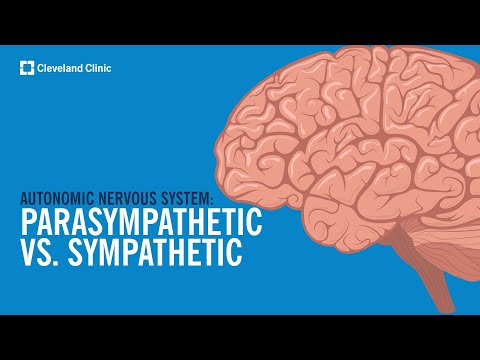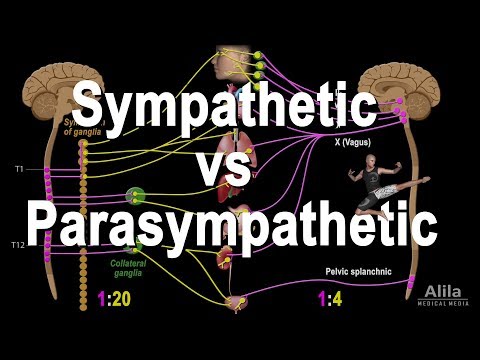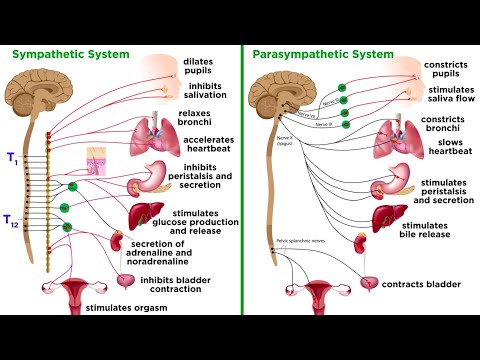The human body is an incredible machine, fine-tuned over millennia. At the heart of this intricate system lies the autonomic nervous system, divided into two main players: the sympathetic and parasympathetic nervous systems. These systems don’t just influence your mood; they directly affect how you handle stress, recover from workouts, and maintain overall wellness. Today, let’s dive deep into the sympathetic vs parasympathetic debate, and see which one rules your body.

1. Dissecting the Sympathetic vs Parasympathetic Systems
The Sympathetic Nervous System: Fight or Flight
The sympathetic nervous system (SNS) is like your body’s turbocharger. When stress hits—think of deadlines, a looming presentation, or a surprise emergency—this system kicks in, scanning your environment for threats. Suddenly, your heart races, your breathing quickens, and you tap into reserves of energy you didn’t even know you had. This is your body preparing for action, whether it’s to fight or flee.
The Parasympathetic Nervous System: Rest and Digest
Now, let’s switch gears. Enter the parasympathetic nervous system (PNS). Often dubbed the “rest and digest” system, it encourages relaxation and optimum bodily functions. Think of it as your personal recovery coach, nudging you to chill out and recharge after that intense sympathetic response.

2. Sympathetic vs Parasympathetic: The Balancing Act
To thrive, your body needs harmony between these two systems. Picture them as a seesaw; too much weight on one side can have real consequences. A constantly revved-up sympathetic system brings chronic stress, inviting all sorts of health issues. In contrast, an overly relaxed parasympathetic state can lead to lethargy and a lack of motivation.
Systole vs Diastole: The Heart’s Dual Role
Understanding the interplay of the sympathetic and parasympathetic systems sheds light on heart functionality.

3. Real-Life Implications of Sympathetic vs Parasympathetic Dominance
Your daily life is a balancing act between these two systems, with the choices you make directly influencing health and performance.
Work Stress and Its Influence
In today’s fast-paced workplaces—think companies like Amazon or the high-stakes environment of Wall Street—constant deadlines can keep the sympathetic nervous system on high alert. While quick thinking is essential, it can lead to serious burnout if not managed well.
Technology and the Nervous System
In our tech-savvy world, notifications and endless connectivity can keep your sympathetic system buzzing, like a constant state of low-level stress.

4. Techniques to Optimize Your Autonomic Balance
The fantastic news is that you hold the power to shape your autonomic nervous system. Here are some actionable techniques to cultivate balance:
Breathing Exercises
Practicing slow, diaphragmatic breathing can significantly engage the parasympathetic system. Just a few minutes of controlled breathing can lower your heart rate and usher in relaxation.
Regular Physical Activity
Getting your body moving balances both sympathetic and parasympathetic activation. Exercise not only stimulates your SNS for that killer workout but also activates the PNS during post-workout recovery, promoting overall cardiovascular health.
Nutrition
Don’t underestimate the power of food! Eating omega-3-rich foods—like salmon or walnuts—supports healthy brain function and fosters a peaceful state of mind. Fuel your muscle gains while promoting calm!

Bridging the Gap Between Sympathetic and Parasympathetic
Understanding the sympathetic vs parasympathetic dynamic is crucial in today’s fast-paced world. While ambition and productivity often stem from sympathetic activation, we cannot discount the importance of rest, recovery, and mental well-being through parasympathetic engagement.
By recognizing how both systems interact and consciously striving to harmonize them, we pave the way for balanced and healthier living. Whether you’re grinding towards that ripped six-pack or working towards peak performance, acknowledging that both stress and relaxation are vital can unlock your true potential. Embrace both sides, and watch your resilience soar!
For more insights and expert advice, check out our articles on topics ranging from How much Benadryl can I take to in-depth explorations of challenges like pseudomonas or even how to get down payment assistance in NC. Together, let’s empower you to achieve not only the body you desire but the mindset that fuels lasting success. Let’s get shredded and thrive!
Sympathetic vs Parasympathetic: Which One Rules Your Body?
The Battle Within
Ever feel your heart racing when you’re late, only to calm down minutes later? That’s the sympathetic vs parasympathetic interplay in action! The sympathetic nervous system (SNS) revs you up, preparing you for action, while the parasympathetic nervous system (PNS) acts like your body’s personal chill-out coach, encouraging relaxation. This fascinating dance not only keeps you ready for life’s curveballs—whether it’s a thrilling sprint or a casual coffee break—but also helps manage stress. Speaking of changing times, did you know that different body responses can be tracked on a calendar? Just like looking at your September 2024 calendar( to plan for those busy days!
Fun Facts to Flex Your Mind
Did you know the sympathetic system triggers your “fight or flight” response? Your adrenaline surges, heart pumps faster, and, voila! You’re ready to take on a bear… or maybe just your work deadline. In contrast, the parasympathetic system promotes a “rest and digest” state; it’s what lets you indulge in your favorite food without feeling anxious—which is great because nobody wants to chomp down on dinner feeling jittery! Some people joke that stress management should just be a line about congressional federal credit union( rates; how’s that for lightening the mood when cash flow is tight?
Delving Deeper
Did you know that when stressed, your body can react similarly to poisoning? Picture this: Ricin, a potent toxin, can affect your body in ways that mirror the sympathetic nervous system’s activation. That’s right! It’s a bit of a leap, but stress and toxicity play off each other,Inexplicably triggering reactions that seem almost identical. Just remember, managing stress is crucial; after all, who wants to feel like they’re dodging toxins daily? States like California have developed unique programs, paralleling the support veterans receive through programs like VA mortgage( options to facilitate a nurturing environment.
Understanding the sympathetic vs parasympathetic systems can literally change your game—balancing stress and calm is critical for well-being. So, whether you’re inducing a rush before a big meeting or winding down for a good night’s sleep, remember this: both systems are always at play, making sure you’re functioning at your best!



























